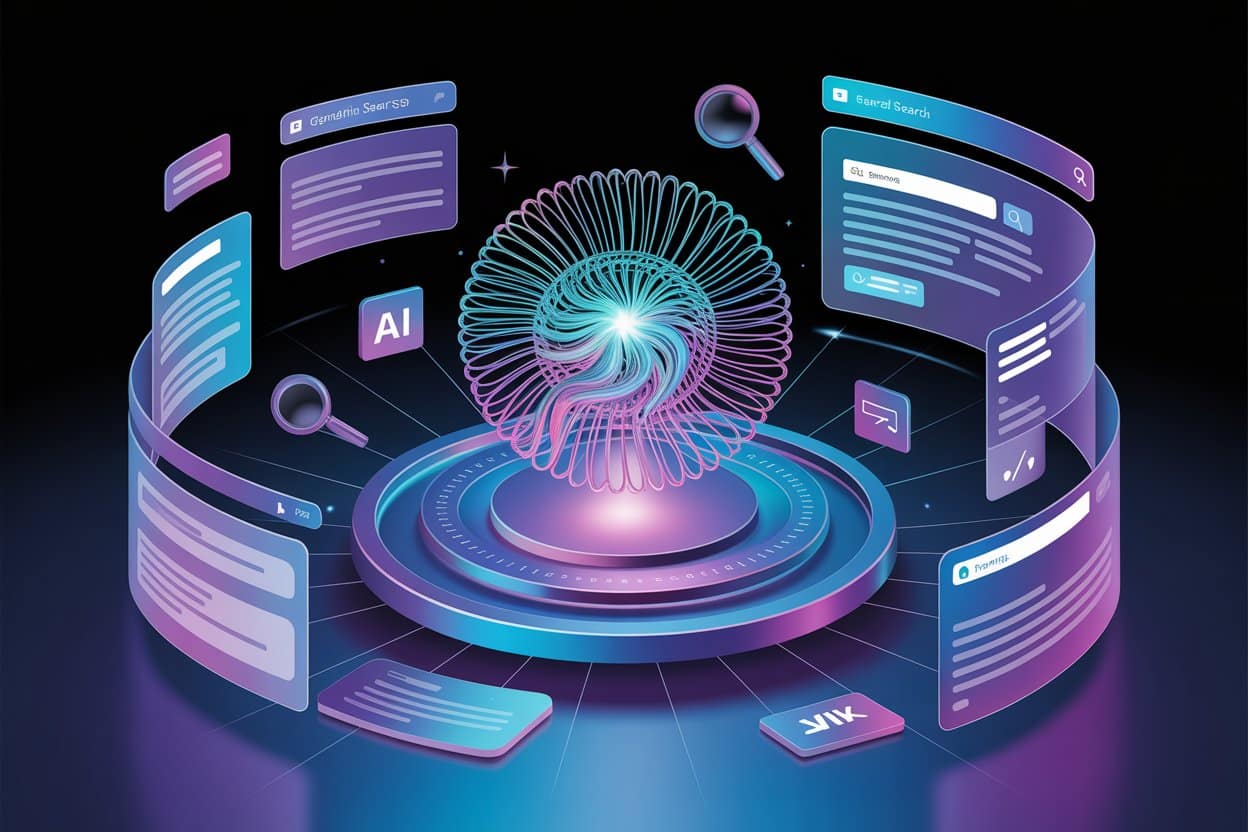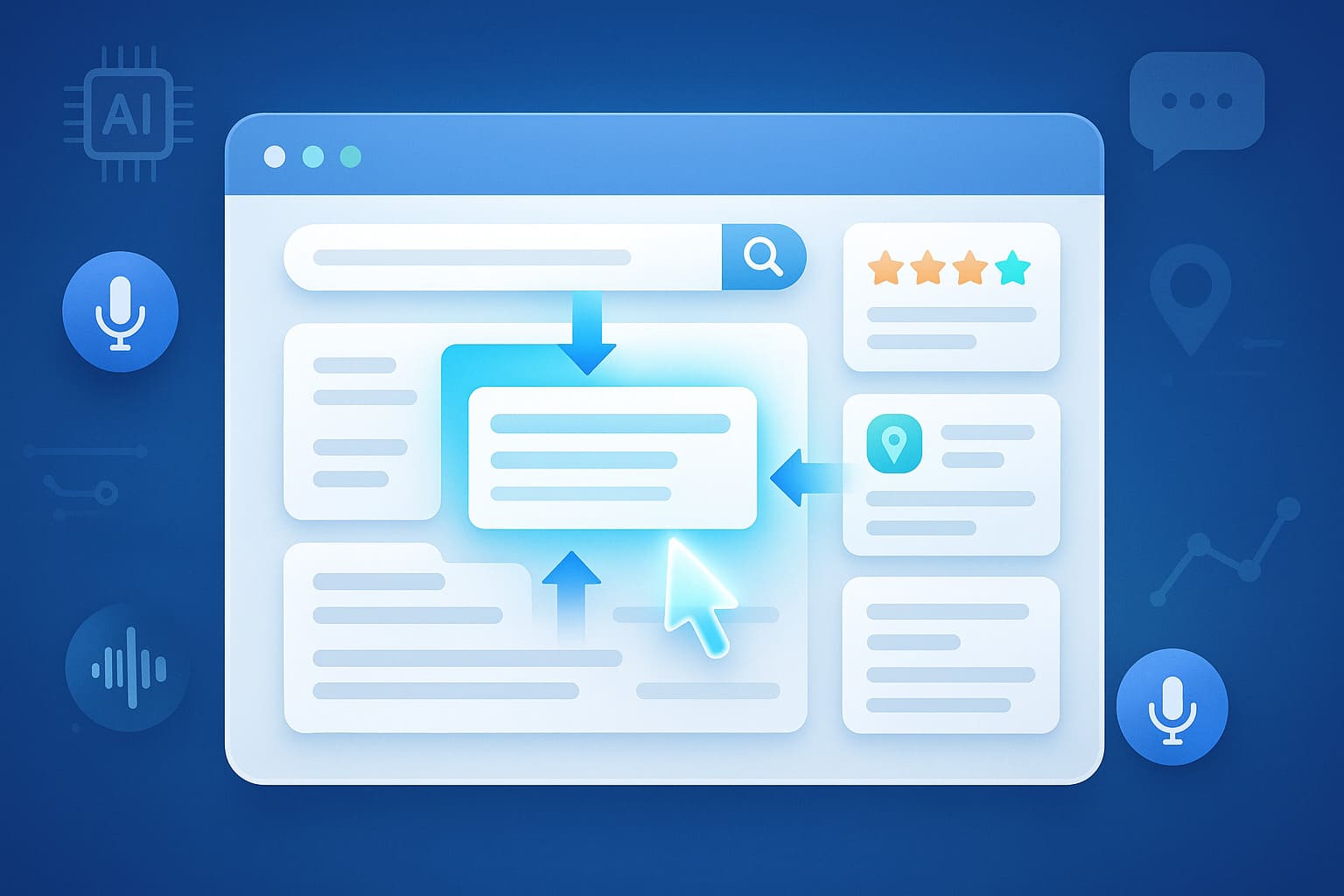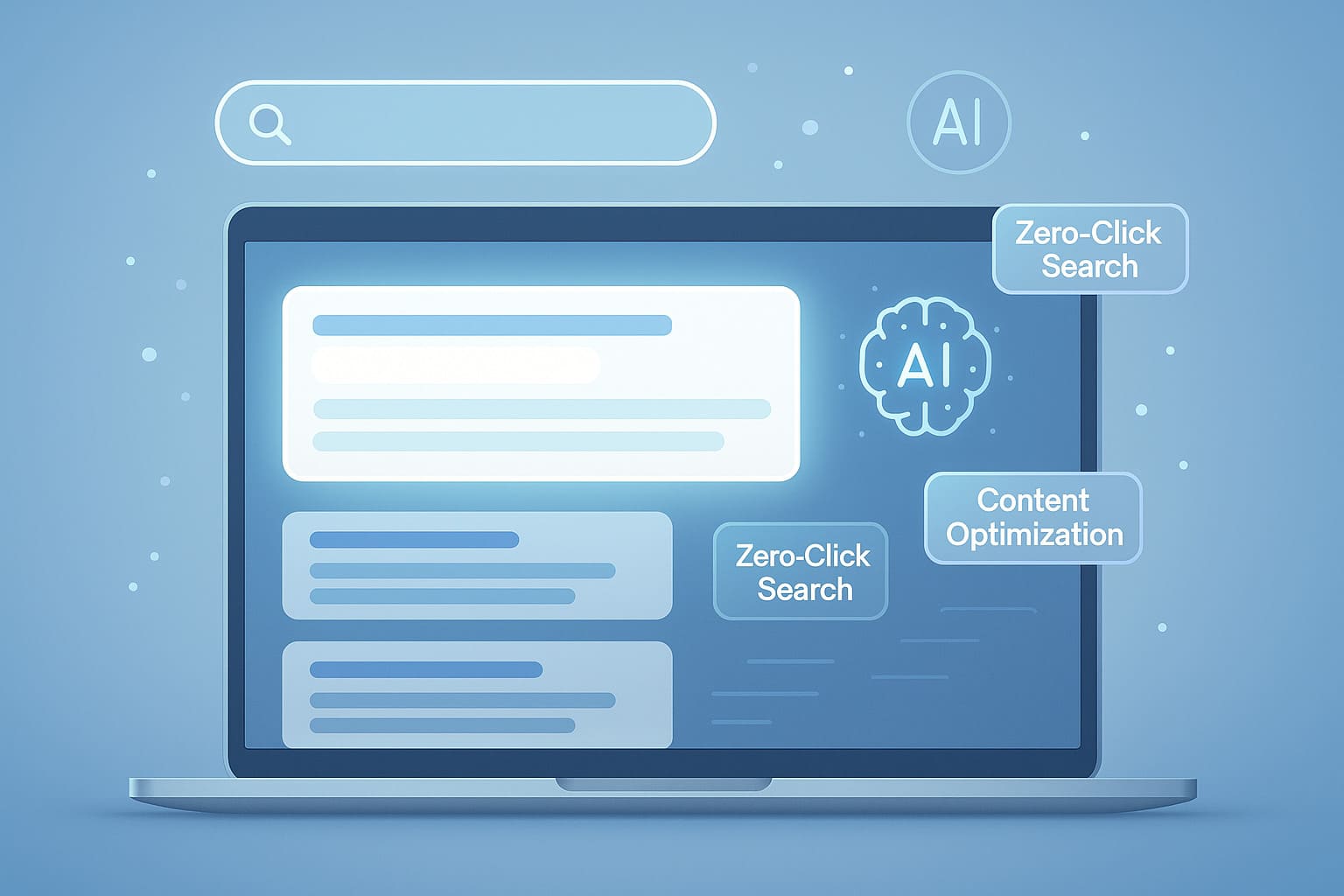Generative Search Optimization Updates in 2025 have redefined how search engines surface content, answer queries, and shape user journeys.
This year, AI-driven platforms like Google, Bing, Perplexity, and You.com made major leaps — from real-time overviews and multi-modal results to fully conversational interfaces.
As generative AI became central to search, traditional SEO had to evolve quickly.
In this post, we break down the most important global Generative Search Optimization developments month by month, covering algorithmic changes, SERP redesigns, feature experiments, and what they mean for content creators, SEO, and marketers worldwide.
Key Takeaways From 2025 So Far
Generative Search Optimization Updates in 2025 reshaped the SERP from the inside out. Google rebranded its Search Generative Experience (SGE) into AI Overviews, rolled them out across Europe, and changed how search answers looked—and worked.
At the same time, AI Mode appeared, offering full-page, chat-driven results powered by Gemini, removing traditional link-first logic. As platforms like Perplexity.ai and You.com launched deep research tools, and Bing made AI citations visible, the shift was clear: search became synthesis.
SEO teams worldwide began rethinking strategy, moving from Position 1 to Generative Engine Optimization (GEO)—where structured, semantic clarity earns a place inside the AI-generated response itself.
- Google rebranded SGE as AI Overviews and launched it in Germany, Italy, France, and Poland.
- AI Overviews replaced traditional snippets with AI-written summaries and multi-source responses.
- Google launched AI Mode in Search Labs with full-screen, conversational answers powered by Gemini.
- Ahrefs reported a 34.5% drop in organic CTR when AI Overviews appeared on the page.
- Bing added source-forward design, displaying publisher names, favicons, and direct URLs in AI results.
- Perplexity.ai released Deep Research, scanning 100+ sources to generate detailed, cited answers.
- You.com launched ARI, an enterprise-level AI engine delivering structured reports with graphs and citations.
Month-by-Month Timeline of Generative Search Optimization Updates 2025
The shift to Generative Search Optimization didn’t arrive all at once—it came in waves. Each month in 2025 brought algorithm shifts, interface redesigns, or new AI features that reshaped how users search and how content ranks.
From AI Overviews to GEO strategies, every platform made moves. Below is a detailed month-by-month breakdown of the most critical updates, all backed by real data, real tools, and real-world results.
January 2025 – Google AI Rebrand + Bing Publisher Transparency
Google started 2025 with a sharp shift. CEO Sundar Pichai confirmed that Gemini would lead product development across all Google services. Google Search Generative Experience (SGE) was now called AI Overviews. Industry sources began using the new name as generative summaries took a fixed spot above search results.
Google adds live news via Associated Press
At the same time, Google signed a deal with the Associated Press. This gave Gemini access to live news feeds. The purpose was to make sure AI answers could reflect real-time events. This was part of Google’s response to increasing competition in the generative search space.
For the first time in almost ten years, Google’s global search market share fell below 90%. Analysts linked the decline to growing use of generative search engines like Perplexity and You.com.
Bing makes publisher names visible in Copilot
Microsoft responded with updates to Bing Copilot. It started showing full publisher names, favicons, and clear source URLs inside AI answers.
This was tested publicly in early January. Microsoft called this design update source-forward. It addressed concerns from site owners who wanted credit and visibility when their content was used.
In a controversial move, Bing was also caught showing a fake Google-style page when users searched for Google.
The layout looked familiar but kept users inside Bing. Critics said this blurred platform boundaries and misled users.
In Europe, Google faced pushback from regulators. Officials wanted stricter fact-checking controls for AI-generated content. Google declined, stating that its existing systems were already effective.
February 2025 – AI Mode Leak and Research Engine Race
Google AI Mode surfaces inside Search
In February, Google was found quietly testing something new. A leak showed an experimental feature called AI Mode running inside Google Search. It was not just a layout tweak. It worked like a full-screen assistant, powered by Gemini 2.0.
You typed a long question, and it gave you structured answers with bullets, headings, and follow-ups—like you were chatting, not searching.
The mode handled layered topics and open queries, something traditional results never did. Internal teams were already running tests on how well this could handle breakdowns.
The aim was clear. This was not a search for links. It was a search made to reply.
AI traffic shifts spark study and questions
While that was happening, analysts were digging into what AI search meant for websites. Kevin Indig studied over 7 million browsing sessions. The clicks were fewer. But when they came, they landed deeper.
People from Gemini or ChatGPT often skip blog posts. They went straight to the homepage, stayed longer, clicked more, acted more ready. It was not random traffic.
It was high-intent. Then came the data from Ahrefs. Across the web, 63% of websites were now seeing small visits from AI chat bots. It was early. But clear.
AI-driven clicks were still under 0.17%, but the users converted better. Digital teams started watching this closely. Not just for SEO—but for Generative Search Optimization.
Perplexity and You.com shift from answers to full research
On February 14, Perplexity.ai launched a feature called Deep Research. It read over 100 sources before writing back. The reply was not a short answer. It looked like a full report, with citations.
You asked once. It did the work. No prompt tricks. No login. Just research.
Then You.com responded with ARI—a tool for heavy topics. ARI scanned 400+ sources, sorted them, and showed reports with graphs and verified sources.
It was built for enterprise teams and regulated industries. Both tools moved beyond Q and A. They turned AI search into research you could present. Clean, cited, and visual.
March 2025 – AI Overviews Expand, and Search Becomes Visual
Google takes AI Overviews global
This month, Google moved fast. In the last week of March, it rolled out Google Search Generative Experience (SGE) summaries across the UK, Germany, Italy, Spain, and Switzerland.
These AI Overviews now showed up right on top — even for users browsing in German, Italian, Polish, or French. Weeks before that, people had already spotted them in incognito tabs. Quiet tests. Sudden scale.
Google clearly wasn’t waiting anymore. Generative search was no longer a U.S. beta. It has become a global product.
AI Mode launches publicly inside Search Labs
After February’s leaks, the official switch flipped. In early March, Google publicly launched AI Mode as part of Search Labs. Not everyone could use it.
Access was limited to Google One Premium subscribers. But the idea was clear. You asked a hard question. It gave you a full answer. In parts. With dialogue. A full-screen response. This wasn’t just a smart box. It felt like talking to a subject expert.
Underneath, it used a refined Gemini AI model running something Google called fan-out search. Instead of one query, it sent many. Then stitched the findings into a step-by-step reply. By mid-March, users in the U.S. could try it. It showed up next to tabs like Images and News.
Search becomes multimodal with Lens + Gemini
Text was not enough anymore. In late March, Google started testing visual prompts inside AI Mode. You could upload a photo — maybe a broken tap, a missing gadget part, or a landmark — and ask what it was. Google Lens analyzed the image.
Then Gemini generated the answer. You asked, “What is this part called and how do I fix it?” and got a full response. That shift made search feel real. Not just words. Vision. Context. Personal use cases.
Clickable citations return to AI answers
People also saw another change — the paperclip icons used for citations inside AI Overviews were replaced. In their place? Full source names or clickable URLs. No more guessing.
Readers could now see exactly which site supported which part of the answer. For publishers and SEO pros, this was important. A sign that Generative Engine Optimization (GEO) might not always mean zero clicks.
Internal leak reveals 47 AI search features in development
Then came the leak. An internal doc showed Google was testing 47 new AI-powered features for search. These included tools for shopping, travel planning, developer tasks, and more. TechCrunch confirmed the story.
Behind closed doors, Google was experimenting at speed. Another stat followed: about 48 percent of all active Google search experiments in March were aimed at keeping users inside Google longer. Not link-outs. Time-ins. That worried many SEO teams.
If answers live inside the engine, what happens to organic traffic? The answer was obvious. You don’t fight the engine. You optimize for it.
April 2025 – AI Content Quality Crackdown and the Rise of Zero-Click Search
Google tightens rules on low-quality AI content
In Madrid, during a live event, John Mueller from Google made it official. The Search Quality Rater Guidelines were updated.
Human raters are now told to look for AI-generated pages. If content feels automated, with no real human edit or value, it can get flagged. The rating? Lowest. This doesn’t trigger an automatic penalty in the algorithm.
But it’s a clear signal. Pages built with bulk AI tools and no oversight are not welcome. SEO teams took notice. Editors started reviewing AI-written content more seriously. Originality and human tone became top priorities again.
AI Overviews lower real clicks, study shows
By April, data had started coming in. A large-scale study by Ahrefs revealed something sharp. When AI Overviews appear, the top organic result loses about 34.5 percent of its usual traffic. This came from tracking over 300,000 real queries.
Pages that normally ranked high saw a big drop if Google’s AI snippet gave the answer first. Google had earlier claimed that citations in AI snapshots drive more clicks.
But this study said otherwise. The numbers didn’t back the claim. SEOs started shifting focus. Visibility now means being inside the AI block — not just ranking first.
Google adds its own links inside AI answers
One update caused real buzz. In some AI summaries, Google started linking back to other Google searches. Instead of sending users to publisher sites, a part of the answer had a line like “Explore more on…” which opened a new search.
These links were more visible than the ones pointing to external sites. Google later confirmed this was a new feature. They said it helped users “go deeper.” But to many site owners, it looked like a loop. A self-contained search. Less traffic out. More time inside Google’s results.
AI Mode expands, search gets faster, more visual
AI Mode was now open to all U.S. users via Search Labs. What started as a test became public within weeks. Users typed long, detailed questions and got full answers with follow-ups. Google added image support too.
You could upload a picture, ask a question, and get a real-time visual explanation powered by Google Lens and Gemini. At events in New York, Google’s team warned SEOs that traffic might change more often now.
SERP layouts were shifting rapidly. What worked last month might not work now. Their message? Expect fluctuation. Stay adaptive.
New AI controls debated – LLMs.txt gets dismissed
Some website owners began testing a file called LLMs.txt to control whether large language models could read their pages. It looked like an idea from older SEO tricks, like meta keywords. Google’s Search Liaison team stepped in. They said LLMs.txt was not a priority. Not standard. Not useful. At least not for now.
Bing rolls back a failed image AI update
Microsoft made smaller moves in April. One was a rollback. Their Image Creator tool had started returning poor quality visuals. Users noticed. So Microsoft restored the old GPT-4-based image model. It was quiet. But useful.
Bing also kept testing ways to show source names more clearly inside AI answers — continuing its push for publisher-friendly formatting.
GSO becomes the new SEO focus
End of April, the term Generative Search Optimization had entered the mainstream. It meant building content not just to rank — but to be quoted, cited, or summarized by AI engines. Marketers started tracking a new set of goals. Not just clicks. But mentions inside AI blocks.
Google Search Console did not yet report AI-driven visits. But some marketers had already begun monitoring AI crawler logs.
Tools like ChatGPT and Gemini were leaving traces. The shift was clear. Search in 2025 was no longer about ranking high. It was about being visible to the AI itself.
May 2025 – AI Mode Nears Full Rollout, Search Becomes Linkable Again
AI Mode opens to millions inside Search Labs
By May 1, AI Mode had crossed a threshold. It was still labeled experimental. But in practice, it was everywhere. Google confirmed that millions of users were now using it to ask longer, more conversational queries.
If you were in the U.S. and enrolled in Search Labs, AI Mode was already live. And Google made it clear — this was no side project.
The interface was easier to find. The tone? Confidence. Google said people were discovering new businesses and websites through these answers. It was a soft counter to the idea that AI summaries kill clicks.
AI Overviews get inline links — finally
Another important shift happened quietly. Google started embedding clickable text links directly into AI answers. Instead of a list of sources at the bottom, names like “Mayo Clinic” now appeared mid-sentence, fully linked.
This made it easier for readers to trace info back to trusted sources without hunting for footnotes. For publishers, this mattered. It showed Google was adjusting to feedback — trying to keep the AI helpful, but also open.
These inline citations brought back some control, especially in sensitive topics like health and finance.
I/O buzz builds as Gemini integration nears
May’s first week always brings attention. Google I/O 2025 was coming up fast. And everyone expected more news around Gemini — especially its multimodal features inside search. Would we see AI answers that handle code, travel, shopping, or even forms? That was the talk. Some insiders hinted at publisher-facing tools that might let site owners track how their content shows up in AI Overviews. Nothing confirmed yet, but the build-up was strong.
GEO Is Now Core SEO
Four months in, one truth is clear: Generative Engine Optimization (GEO) is no longer optional. It is essential. Marketers are now working on two parallel search fronts — the classic ten-blue-links ranking and the rising AI answer box. Both matter. Both move fast.
What began as experiments in 2023 are now standard features in 2025. Google’s AI Overviews, Gemini-powered AI Mode, Search Labs, multilingual rollouts, inline citations — every part of the search experience is evolving. At the same time, Microsoft’s Bing keeps refining Copilot, while tools like Perplexity.ai and You.com focus on research-grade summaries.
Sources
-
Google’s CEO: Scaling Gemini For Consumers Biggest Focus Of 2025 – Search Engine Roundtable
-
Your Comprehensive Guide to Preparing for Google’s SGE – Conductor
-
SEO News – Google Market Share Drops, AP Deal for Gemini, & More – Lumar
-
Microsoft Bing Testing New AI Copilot Answer Box – Search Engine Roundtable
-
Introducing Perplexity Deep Research – Perplexity.ai
-
Gil Press – Articles & AI Research Reporting – Forbes via Muck Rack
-
Google AI Overviews Explained: Updates and Changes – SE Ranking
-
A New Google Core Update is Rolling Out (March 2025) – Lumar
-
Try Google Search’s AI Mode in Labs – Google
-
Microsoft Reverses Changes to Bing Image Creator – DataPhoenix
-
Bing Reverts Image Creator Model Amid Complaints – Search Engine Land
-
2025 Trend: Generative Search Will Become the New Normal – eMarketer






